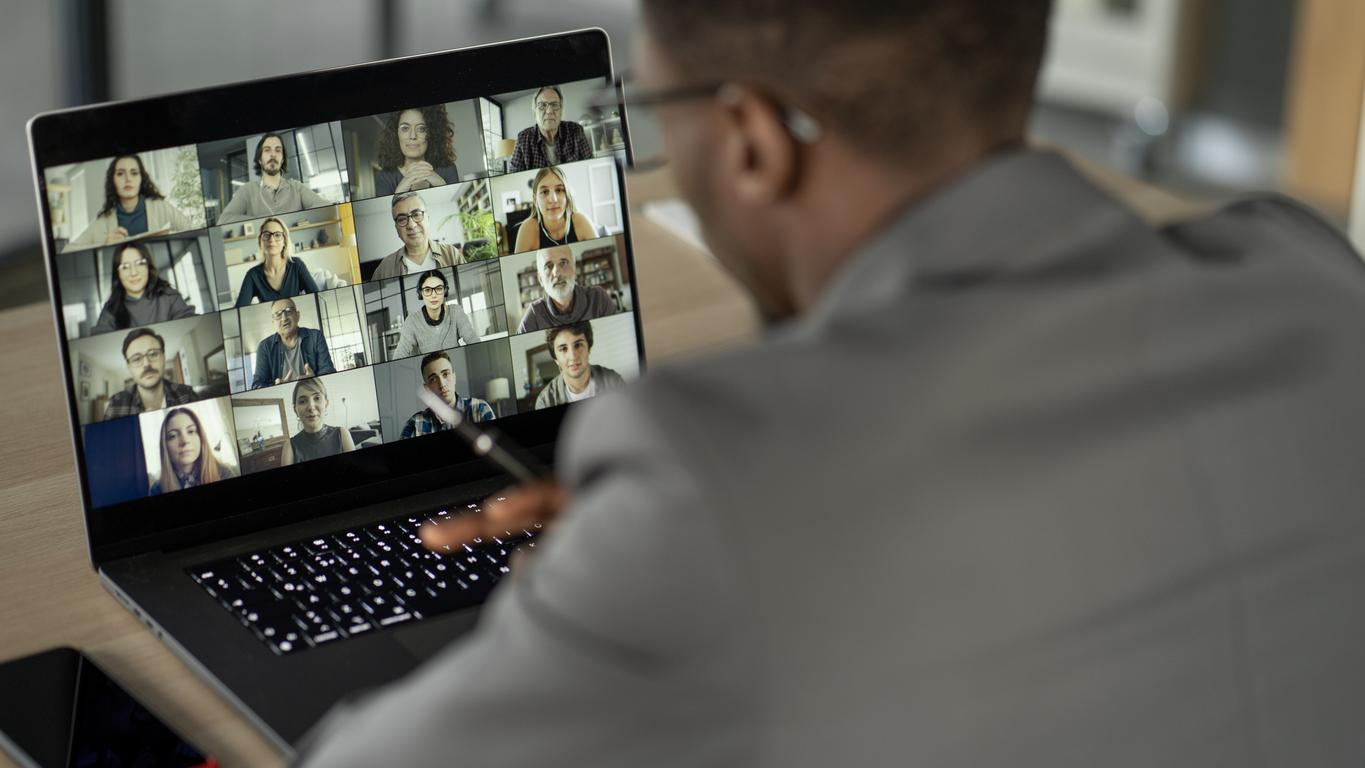A scientific study confirms the harmful effects and fatigue of videoconferencing on the physical and psychological health of users.

- According to the new study, the feeling of fatigue after watching a video conference is very real.
- Data shows that virtual meetings exhaust the brain faster than face-to-face communication. They also cause difficulty concentrating.
- The authors advise taking breaks after 30 minutes of videoconferencing.
With technological advances and the generalization of teleworking, professional meetings by videoconference have become common. But, these exchanges via Zoom, FaceTime or Microsoft Team are not without consequences. Austrian work, published in the journal Scientific Reportsconfirm that fatigue linked to teleconferences, nicknamed “Zoom fatigue”has a significant impact on the physical and psychological health of users.
Videoconferencing : virtual meetings are draining brain
To measure the impact of meetings via screens on the body, scientists carried out a study with 35 students. These participants followed a 50-minute course, some were on site and others remotely. The researchers fitted them with electrodes to measure their brain and heart activity during the session. The results revealed notable differences between the face-to-face and online groups. Virtual meetings exhaust the brain faster than face-to-face communication. Indeed, the volunteers who participated in the videoconference showed more signs of fatigue and sadness as well as difficulty concentrating than the others.
“Study participants reported feeling significantly more tired, sleepy and tired, as well as less alert, happy and active, after participating in the video conference, compared to those who attended the conference in person“, indicate the authors in their article.

Of the recommendations to combat there zoom fatigue
“Individuals and organizations should not ignore the fatigue potential of video conferencing. A major implication of our study is that videoconferencing should be considered as a possible complement to face-to-face interaction, but not as a substitute.conclude the scientists in their article. They add that further research is needed to better understand the impact of these video conferences on participants, particularly in work and home settings. While waiting for this data, the team still made some recommendations to combat the fatigue caused by online meetings.
“Based on our research results, we recommend a break after 30 minutes [de visioconférence]because we were able to observe significant changes in physiological and subjective fatigue after 50 minutes. Additionally, using features such as speaker mode view” [une fonctionnalité qui permet simultanément une vue individuelle de l’interlocuteur ainsi qu’une vue de l’ensemble des participants, ndlr.] to reduce the intensity of continuous eye contact, could prove useful”specified René Riedlprofessor at the University of Applied Sciences of Upper Austria and co-author of the study, to our colleagues at the journal IEEE Spectrum.















